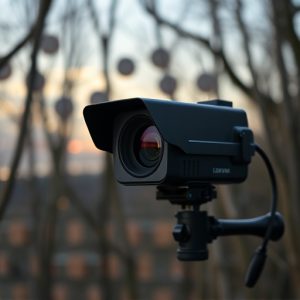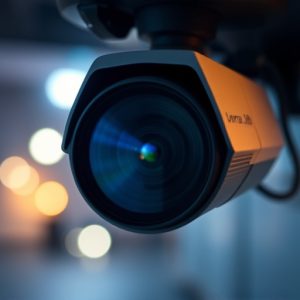Home Security: Detecting Microphone Bugs & Choosing Elderly Care Cameras
Microphone bug sweeping and hidden camera detection in elderly care homes are crucial for balancing…….
Microphone bug sweeping and hidden camera detection in elderly care homes are crucial for balancing security, privacy, and legal compliance. Using best hidden cameras tailored for elderly care environments, along with physical security measures and regular audits, can effectively protect residents without infringing on their rights. Selecting high-quality equipment, prioritizing transparency and consent, and adhering to legal guidelines ensure a comprehensive approach to safety while respecting individual privacy.
“Uncover the hidden threats with our comprehensive guide to microphone bug sweeping detection. From understanding the basics to exploring advanced techniques, we demystify this critical aspect of home security. Learn about common tactics employed to identify covert listening devices and discover best practices tailored for your sanctuary. We also weigh ethical considerations and legalities, ensuring informed decisions. Equip yourself with knowledge on choosing the right tools, including top-tier hidden cameras suitable for elderly care, to safeguard your personal space.”
- Understanding Microphone Bug Sweeping: The Basics
- Common Detection Techniques for Hidden Cameras
- Best Practices for Home Security Against Bugs
- Choosing the Right Equipment for Bug Sweeping
- Ethical Considerations and Legal Aspects of Bug Sweeping
Understanding Microphone Bug Sweeping: The Basics
Microphone bug sweeping, or audio surveillance, involves the discreet placement and use of hidden microphones to monitor conversations and gather sensitive information. It’s a clandestine method often employed for security, detective, or personal reasons. The practice requires a deep understanding of both technology and legal boundaries, as it involves capturing private discussions without consent in many jurisdictions.
In the context of elderly care, using best hidden cameras for surveillance—which should also be compliant with privacy laws—can help ensure safety and well-being. However, microphone bug sweeping specifically targeting elders raises serious ethical concerns. It’s crucial to strike a balance between safeguarding vulnerable individuals and preserving their privacy, promoting open communication, and upholding the law.
Common Detection Techniques for Hidden Cameras
Hidden camera detection has become an essential aspect of privacy and security, especially in sensitive areas like elderly care homes. There are several common techniques employed to uncover these clandestine devices, designed to ensure a safe and secure environment for residents. One popular method is visual inspection, where trained professionals use specialized equipment like infrared cameras and UV lights to detect any anomalies or hidden components. These tools can help identify small, hard-to-spot cameras that might be disguised as everyday objects.
Additionally, electromagnetic field (EMF) detectors are often utilized to pick up on the unique signals emitted by hidden cameras’ components. This technique is particularly effective in identifying micro-cameras that are often used in tiny, unobtrusive forms. The best hidden camera detectors for elderly care settings should be able to swiftly and accurately identify these devices, ensuring the peace of mind of both residents and caregivers.
Best Practices for Home Security Against Bugs
To enhance home security and mitigate the risk of bug sweeps, several best practices can be implemented. Start by identifying potential entry points, such as windows, doors, and vents, and ensure they are securely locked or sealed. Install high-quality door and window locks, and consider adding security screens to prevent unauthorized access. Invest in a reliable home security system with motion sensors and alarms to deter intruders. Regularly update your system’s firmware and software to patch any vulnerabilities.
Additionally, incorporate hidden cameras for elderly care as part of your surveillance strategy. Best hidden cameras should offer clear visuals, easy installation, and remote access for monitoring. Position them discreetly in common areas and high-risk zones to provide round-the-clock protection without compromising privacy. Combine these measures with regular security audits and proactive maintenance for a robust defense against potential bug sweeps.
Choosing the Right Equipment for Bug Sweeping
When it comes to bug sweeping, selecting the appropriate equipment is paramount to ensuring effective and efficient operations. One crucial component is choosing the best hidden cameras for elderly care or any sensitive environment. These devices should offer high-quality video and audio capture, allowing for detailed analysis of potential bugs or eavesdropping activities.
The market offers a range of options, from small, discreet cameras to more advanced, wireless setups. Consider factors like resolution, field of view, night vision capabilities, and ease of installation when making your selection. Additionally, investing in a reliable bug sweeping kit that includes various tools for detecting and locating hidden devices can significantly enhance the overall process.
Ethical Considerations and Legal Aspects of Bug Sweeping
When employing bug sweeping techniques, especially in a domestic setting like elderly care homes, it’s paramount to address the ethical and legal dimensions. The use of hidden cameras or bug sweeps intrudes upon privacy, so transparency is key. Informed consent from residents or their guardians is essential; they should be made aware of the surveillance methods used, the reasons behind them, and have the right to refuse.
Legally, there are strict guidelines regarding what constitutes acceptable surveillance. For instance, many jurisdictions have laws specifying the types of devices allowed, where they can be placed, and who has access to the footage. Using best hidden cameras for elderly care should align with these regulations, ensuring the safety and comfort of both residents and staff while maintaining respect for individual privacy rights.
In the realm of home security, staying ahead of potential hidden threats is paramount. By understanding microphone bug sweeping and implementing the right detection techniques, as discussed in this article, homeowners can ensure their privacy and peace of mind. The best practices and ethical considerations outlined here provide a comprehensive guide to safeguarding your space, especially when considering the well-being of elderly care recipients who may be more vulnerable. Remember, being proactive about security is key; choose the right equipment, stay informed, and protect what matters most.


